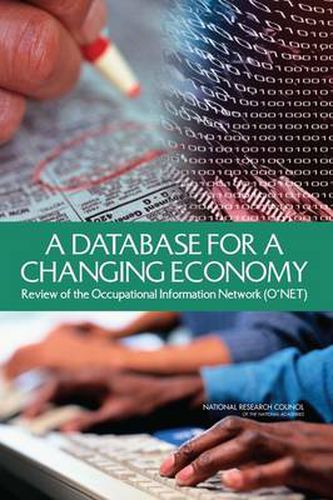Readings Newsletter
Become a Readings Member to make your shopping experience even easier.
Sign in or sign up for free!
You’re not far away from qualifying for FREE standard shipping within Australia
You’ve qualified for FREE standard shipping within Australia
The cart is loading…






Information about the characteristics of jobs and the individuals who fill them is valuable for career guidance, reemployment counseling, workforce development, human resource management, and other purposes. To meet these needs, the U.S. Department of Labor (DOL) in 1998 launched the Occupational Information Network (O*NET), which consists of a content model–a framework for organizing occupational data–and an electronic database. The O*NET content model includes hundreds of descriptors of work and workers organized into domains, such as skills, knowledge, and work activities. Data are collected using a classification system that organizes job titles into 1,102 occupations. The National Center for O*NET Development (the O*NET Center) continually collects data related to these occupations. In 2008, DOL requested the National Academies to review O*NET and consider its future directions. In response, the present volume inventories and evaluates the uses of O*NET; explores the linkage of O*NET with the Standard Occupational Classification System and other data sets; and identifies ways to improve O*NET, particularly in the areas of cost-effectiveness, efficiency, and currency.
$9.00 standard shipping within Australia
FREE standard shipping within Australia for orders over $100.00
Express & International shipping calculated at checkout
Information about the characteristics of jobs and the individuals who fill them is valuable for career guidance, reemployment counseling, workforce development, human resource management, and other purposes. To meet these needs, the U.S. Department of Labor (DOL) in 1998 launched the Occupational Information Network (O*NET), which consists of a content model–a framework for organizing occupational data–and an electronic database. The O*NET content model includes hundreds of descriptors of work and workers organized into domains, such as skills, knowledge, and work activities. Data are collected using a classification system that organizes job titles into 1,102 occupations. The National Center for O*NET Development (the O*NET Center) continually collects data related to these occupations. In 2008, DOL requested the National Academies to review O*NET and consider its future directions. In response, the present volume inventories and evaluates the uses of O*NET; explores the linkage of O*NET with the Standard Occupational Classification System and other data sets; and identifies ways to improve O*NET, particularly in the areas of cost-effectiveness, efficiency, and currency.